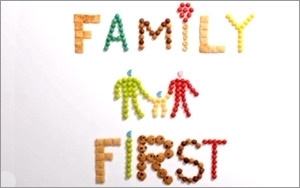food
Brand Purpose, Brand Champions Drive General Mills
- by Karl Greenberg , October 16, 2014
 Be the brand champion, and put consumers at the center. That's a cliche, but Mark Addicks, SVP and CMO at General Mills, speaking at Association of National
Advertisers’ Masters of Marketing conference on Thursday showed how the company lives that mantra.
Be the brand champion, and put consumers at the center. That's a cliche, but Mark Addicks, SVP and CMO at General Mills, speaking at Association of National
Advertisers’ Masters of Marketing conference on Thursday showed how the company lives that mantra.
It hasn't been easy, because the business environment has tightened consumers' budgets five years into the recovery, with incomes down 8%. But the company has succeeded by taking lessons from 19 of its successful brands — brands like Larabar, Food Should Taste Good, Lucky Charms, Pillsbury, Cheerios and Old El Paso — then visited those teams. These brands, he said, all talk first about who the brand was for, who the brand champion was. They were intuitive about it, and took it as job one.
advertisement
advertisement
So the company created an in-house "Brand Champions" program, whose goal was to shift from defining marketing as advertising, products and categories, and onto brand purpose on human terms, and brand champions.
"We think behind every great brand there are champions out there -- super consumers of category. The brands that aren't growing are fuzzy and generic with who their customers are." It's not, for example, women in a given age demographic with a pulse. Box Tops for Education is an example.
"We used to think demographically, but we challenged brand teams to go deeper. They found the real power of Box Tops is the enrichment programs that it funds." That included things like adding a 3D experience to a child's education. The results: last year 40 million households participated and raised $80 million for schools."
Then there's the Fiber One bar, which for years was "cereal with twigs," as Addicks put it. The company happened to find itself in conversations with Weight Watchers, where General Mills discovered that WW members were using Fiber One bars to make low-calorie brownies that also taste good. "They were creating a product you craved and that was also good for you. We learned there was a whole market there, and brand champions, and we moved them to the center and got closer to them."
The result was a new purpose for Fiber One, he said. "Making dieting suck less; we created ways to make it a convenient way to manage weight."
For Cinnamon Toast Crunch, the company looked at the champions and found they saw themselves as cereal-eating machines. "That spurred us to greater creative." The ads featured two crazy Cinnamon Toast Crunch squares that ate everything in sight, including each other. Another example of defining what a brand needs to be and figuring out how to say it was Betty Crocker's Family Project, starting with LGBT community, "where we asked people to tell us about their families." That led to the idea that "Betty Crocker loves all families, no matter what they look like."
Having a brand purpose also gives marketers a certain degree of courage when it comes to staying on message and doing "powerful things." When the company ran its Cheerios multi-racial family ads last year, it got a lot of hate mail, tweets, emails, etc. The company didn't take the ads down. Rather it doubled down, running follow-up during the Super Bowl.




